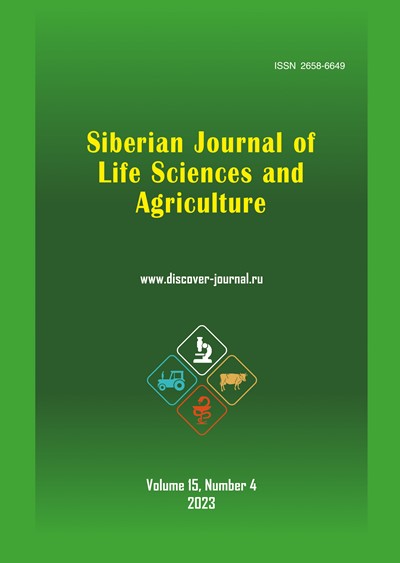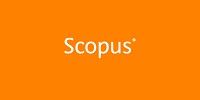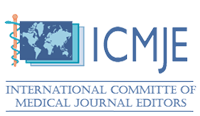АНТАГОНИСТИЧЕСКИЙ ПОТЕНЦИАЛ ПРИРОДНЫХ ИЗОЛЯТОВ TRICHODERMA SP. В ОТНОШЕНИИ НОВЫХ ЭКОНОМИЧЕСКИ ЗНАЧИМЫХ МИКОПАТОГЕНОВ ВИНОГРАДА В ЗАПАДНОМ ПРЕДКАВКАЗЬЕ
Аннотация
По данным мировых исследований на многих сельскохозяйственных культурах, в том числе винограде, отмечается расширение видового состава микопатогенов за счет появления новых вредоносных видов из родов Alternaria Nees, 1817 и Fusarium Link., 1809. Патогенные виды Fusarium Link., 1809, поражающие соцветия и грозди винограда, вызывают снижение средней массы грозди на 12,8-60,3 %, уменьшение длины главной оси грозди на 7,7-39,4 %, что негативно сказывается качестве виноградной продукции, и особенно товарности столового винограда. Грибы рода Alternaria Nees, 1817, входящие в патокомплекс некротической листвой пятнистости винограда, вызывают снижение фотосинтетического потенциала виноградного растения, что может снизить урожай с куста на 18-27 % и сахар в ягодах на 6,1-9,1 %. Эффективными агентами биоконтроля данных микопатогенов могут выступать грибы рода Trichoderma Pers., 1801. Целью исследований было протестировать in vitro культуры Trichoderma spp., выделенные из естественных условий ампелоценозов Западного Предкавказья в отношении возбудителей фузариозного усыхания генеративных органов (Fusarium proliferatum F-41/1, F. oxysporum F-117) и некротической пятнистости листьев (Alternaria sp. 425-3) и выбрать штаммы с наибольшей антагонистической активностью. В качестве наиболее активных антагонистов установлены следующие штаммы Trichoderma spp.: T-441/1 в отношении Fusarium spp. и T-404-1 в отношении Alternaria sp.
Скачивания
Литература
References
Maslienko L. V., Voronkova A. K., Datsenko L. A., Efimtseva E. A., Punogina D. A., Gaidukova S. A., Kazakova V. V., Kovaleva S. R. Pervichnyy skrining shtammov gribov-antagonistov iz kollektsii laboratorii mediko-biologicheskogo metoda VNII maslichnykh kul’tur im. V. S. Pustovoyta na vozbuditelya fomoza podsolnechnika (Chast’ 1) [Primary screening of fungal antagonist strains from the collection of the laboratory of the biomedical method of the All-Russian Research Institute of Oilseeds named after V. S. Pustovoyt for the causative agent of sunflower phomosis (Part 1)]. Maslichnyye Kul’tury [Maslichnye Kultury], 2020, vol. 2, no. 182, pp. 103-111. https://www.elibrary.ru/item.asp?id=43089483
Gagkaeva T. Yu., Gavrilova O. P., Gorina A. S., Kazartsev I. A., Hannibal F. B. Sravnitel’nyye metody vyyavleniya toksinoobrazuyushchikh gribov roda Fusarium v zerne [Comparing methods for detecting toxin-producing fungi of the Fusarium genus in grain]. Mikologiya i Fitopatologiya [Mikologiya i Fitopatologiya], 2020, vol. 5, pp. 292-298. https://www.elibrary.ru/item.asp?id=30150095
Yurchenko E. G., Savchuk N. V., Burovinskaya M. V. Fuzarioznoye usykhaniye generativnykh organov vinograda: Osobennosti patogeneza i vredonosnosti. Magarach [Fusarium desiccation of the generative organs of grapes: Peculiarities of pathogenesis and harmfulness. Magarach]. Vinogradarstvo i vinodeliye [Viticulture and Winemaking], vol. 4, no. 14, pp. 344-349. https://doi.org/10.35547/IM.2020.40.10.010
Abdessemed N., Kerroum Ali., Bahet Y. A., Zermane N. First report of Alternaria alternata leaf spot on Xanthium strumarium L. in Algeria. Journal of Phytopathology, 2019, vol. 101, no. 1. https://link.springer.com/article/10.1007/s42161-019-00245-2
Anisimova O. K., Seredin T. M., Danilova O. A., Filyushin M. A. First report of Fusarium proliferatum causing garlic clove rot in Russian Federation, 2021. https://doi.org/10.1094/PDIS-12-20-2743-PDN
Benkeblia N., Schattman R. E., Wiener S., Roesch-McNally G. Climate change and crop production: foundations for agroecosystem resilience. Boca Raton, CRC Press, 2018, 17 p. https://www.taylorfrancis.com/chapters/edit/10.1201/9781315391861-1/climate-change-crop-production-noureddine-benkeblia-rachel-schattman-sarah-wiener-gabrielle-roesch-mcnally
Bunbury-Blanchette A. L., Walker A. K. Trichoderma species show biocontrol potential in dual culture and greenhouse bioassays against Fusarium basal rot of onion. Biological Control, 2019, vol. 130, pp. 127-135. https://doi.org/10.1016/j.biocontrol.2018.11.007
Burovinskaya M. V., Yurchenko E. G. Features of the pathogenesis of Alternaria spot on grapes. In: Magarach: Science and practice 2020 International scientific and practical conference. Yalta, Institute of Viticulture and Winemaking Magarach, 2020. https://www.researchgate.net/publication/344207235_Anthocyanin_characterization_of_different_Portuguese_grape_varieties_Vitis_vinifera_L
Chang S., Handong Z., Wenxiao J., Bangdi L., Jiankang C., Weibo J. Antifungal efficacy of ursolic acid in control of Alternaria alternata causing black spot rot on apple fruit and possible mechanisms involved. Scientia Horticulturae, 2019, vol. 256, e108636. https://doi.org/10.1016/j.scienta.2019.108636
Chen J-L., Sun S-Z., Miao C-P., Wu K., Chen Y-W., Xu L-H., Guan H-L., Zhao L-X. Endophytic Trichoderma gamsii YIM PH30019: a promising biocontrol agent with hyperosmolar, mycoparasitism, and antagonistic activities of induced volatile organic compounds on root-rot pathogenic fungi of Panax notoginseng. Journal of Ginseng Research, 2016, vol. 40, pp. 315-324. https://doi.org/10.1016/j.jgr.2015.09.006
De Souza J. T., Trocoli R. O., Monteiro F. P. Plants from the Caatinga biome harbor endophytic Trichoderma species active in the biocontrol of pineapple fusariosis. Biological Control, 2016, vol. 94, pp. 25-32. https://doi.org/10.1016/j.biocontrol.2015.12.005
Dias M. C. Phytotoxicity: An overview of the physiological responses of plants exposed to fungicides. Journal of Botany, vol. 2012, e135479. https://doi.org/10.1155/2012/135479
Druzhinina I. S., Seidl-Seiboth V., Herrera-Estrella A., Horwitz B. A., Kenerley C. M., Monte E., Mukherjee P. K., Zeilinger S., Grigoriev I. V., Kubicek C. P. Trichoderma: The genomics of opportunistic success. Nature Reviews Microbiology, 2011, vol. 9, pp. 749-759. https://www.nature.com/articles/nrmicro2637
Gveroska B., Ziberoski J. Trichoderma harzianum as a biocontrol agent against Alternaria alternata on tobacco. Applied Technologies and Innovations, 2012, vol. 7, no. 2, pp. 67-76. https://www.researchgate.net/publication/267858902_Trichoderma_harzianum_as_a_biocontrol_agent_against_Alternaria_alternata_on_tobacco
Jangir M., Sharma S., Sharma S. Target and non-target effects of dual inoculation of biocontrol agents Fusarium wilt in Solanum lycopersicum. Biological Cоntrol, 2019, vol. 138, e104069. https://doi.org/10.1016/j.biocontrol.2019.104069
Kapgate O. Y., Khare U. K., Kelwatkar N. M. Testing the efficacy of biocontrol agents against Alternaria porri under in vitro conditions. Journal of Pharmacognosy and Phytochemistry, 2019, vol. 8, no. 4, pp. 3164-3168. https://www.phytojournal.com/archives/2019/vol8issue4/PartAZ/8-4-634-788.pdf
Mukhopadhyay R., Kumar D. Trichoderma: A beneficial antifungal agent and insights into its mechanism of biocontrol potential. Egyptian Journal of Biological Pest Control, 2020, vol. 133, pp. 30. https://ejbpc.springeropen.com/articles/10.1186/s41938-020-00333-x
Pastrana AM., Basallote-Ureba M., Aguado A., Akdi K., Capote N. Biological control of strawberry soil-borne pathogens Macrophomina phaseolina and Fusarium solani, using Trichoderma asperellum and Bacillus sp. Phytopathologia Mediterranea, 2016, vol. 55, no. 1, pp. 109-120. https://oajournals.fupress.net/index.php/pm/article/view/5653
Praveen B., Prasanna Kumar M. K., Devanna P., Palanna K. B., Buella P. P., Ramesh G. V., Reddy N. K., Nagaraja A. First report of Alternaria alternata causing leaf spot on Oat (Avena sativa) in India, 2021. URL: https://apsjournals.apsnet.org/doi/10.1094/PDIS-02-21-0322-PDN
Ragab M. M., Abada K. A., Abd-El-Moneim M. L., Abo-Shosha Y. Z. Effect of different mixtures of some bioagents and Rhizobium phaseoli on bean damping-off under field condition. International Journal of Scientific and Engineering Research, 2015, vol. 6, no. 7, pp. 1009-1106. https://www.citefactor.org/journal/pdf/Effect-of-different-mixtures-of-some-bioagents-and-Rhizobium-phaseoli.pdf
Rajput R. B., Solanky K. U., Prajapati V. P., Pawar D. M., Suradkar S. R. Effect of fungal and bacterial bioagents against Alternaria alternata (Fr.) Keissler in vitro condition. Bioscan, 2013, vol. 8, no. 2, pp. 627-629. https://www.semanticscholar.org/paper/effect-of-fungal-and-bacterial-bioagents-against-in-rajput-solanky/1813898c04701e59cdba3c115a101bec4c9eb9b7
Rodrigues T. T., Berbee M. L., Simmons E. G., Cardoso C. R., Reis A., Maffia L. A., Mizubuti E.S.G. First report of Alternaria tomatophila and A. grandis causing early blight on tomato and potato in Brazil. New Disease Reports, 2010, vol. 22, pp. 28. https://www.ndrs.org.uk/pdfs/022/NDR_022028.pdf
Velásquez A. C., Castroverde C. D., He S. Y. Plant-pathogen warfare under changing climate conditions. Current Biology, 2018, vol. 28, no. 10, pp. 619-634. https://doi.org/10.1016/j.cub.2018.03.054
Vuković S., Inđić D., Gvozdenac S. Phytotoxic effects of fungicides, insecticides and nonpesticidal components on pepper depending on water quality. Pesticidi i Fitomedicina, 2014, vol. 29, no. 2, pp. 145-153. http://www.doiserbia.nb.rs/Article.aspx?ID=1820-39491402145V#.YjBh9urP2Uk
Wang M., Jiang N., Wang Y., Jiang D., Feng X. Characterization of phenolic compounds from early and late ripening sweet cherries and their antioxidant and antifungal activities. Journal of Agricultural and Food Chemistry, 2017, vol. 65, pp. 5413-5420. https://pubs.acs.org/doi/10.1021/acs.jafc.7b01409
Yuan S., Li W., Li Q., Wang L., Cao J., Jiang W. Defense responses, induced by p-coumaric acid and methyl p-coumarate, of jujube (ziziphus jujuba mill.) fruit against black spot rot caused by Alternaria alternata. Journal of Agricultural and Food Chemistry, 2019, vol. 67, pp. 2801-2810. https://pubmed.ncbi.nlm.nih.gov/30794401/
Yurchenko E. G. Savchuk N. V., Porotikova E. V., Vinogradova S. V. First report of Grapevine (Vitis sp.) cluster blight caused by fusarium proliferatum in Russia]. Plant Disease, 2019, vol. 104, no. 3, pp. 991. https://doi.org/10.1094/PDIS-05-19-0938-PDN
Yurchenko E. G., Burovinskaya M. V. Field resistance of grape varieties to Alternaria. Pomiculture and Small Fruits Culture in Russia, 2019, vol. 58, pp. 194-200. https://doi.org/10.31676/2073-4948-2019-58-194-200
Zaher E. A., Abada K. A., Zyton M. A. Effect of combination between bioagents and solarization on management of crown-and stem-rot of Egyptian clover. American Journal of Plant Sciences, 2013, vol. 1, no. 3, pp. 43-50. http://jplantsciences.org/article/215/10.11648.j.jps.20130103.15
Zehra A., Dubey M. K., Meena M., Upadhyay R. S. Effect of different environmental conditions on growth and sporulation of some Trichoderma species. Journal of Environmental Biology, 2017, vol. 38, pp. 197-203. http://jeb.co.in/journal_issues/201703_mar17/paper_03.pdf
Список литературы
Первичный скрининг грибных штаммов антагонистов из коллекции лаборатории биометода вниимк к возбудителю фомоза подсолнечника (часть 1) / Маслиенко Л. В., Воронкова А. Х., Даценко Л. А., Ефимцева Е. А., Пуногина Д. А., Гайдукова С. А., Казакова В. В., Ковалева С. Р. // Масличные культуры. 2020. Т. 2. № 182. С. 103-111. https://www.elibrary.ru/item.asp?id=43089483
Сравнение методов выявления в зерне токсинопродуцирующих грибов рода fusarium / Гагкаева Т. Ю., Гаврилова О. П., Орина А. С., Казарцев И. А., Ганнибал Ф. Б. // Микология и фитопатология. 2017. Т. 51. № 5. С. 292-298. https://www.elibrary.ru/item.asp?id=30150095
Юрченко Е. Г. Фузариозное усыхание генеративных органов винограда: особенности патогенеза и вредоносность / Е. Г. Юрченко, Н. В. Савчук, М. В. Буровинская // Магарач. Виноградарство и виноделие. 2020. Т. 22, № 4(114). С. 344-349. https://doi.org/10.35547/IM.2020.40.10.010
Abdessemed N., Kerroum Ali., Bahet Y. A., Zermane N. First report of Alternaria alternata leaf spot on Xanthium strumarium L. in Algeria. Journal of Phytopathology, 2019, vol. 101, no. 1. https://link.springer.com/article/10.1007/s42161-019-00245-2
Anisimova O. K., Seredin T. M., Danilova O. A., Filyushin M. A. First report of Fusarium proliferatum causing garlic clove rot in Russian Federation, 2021. https://doi.org/10.1094/PDIS-12-20-2743-PDN
Benkeblia N., Schattman R. E., Wiener S., Roesch-McNally G. Climate change and crop production: foundations for agroecosystem resilience. Boca Raton, CRC Press, 2018, 17 p. https://www.taylorfrancis.com/chapters/edit/10.1201/9781315391861-1/climate-change-crop-production-noureddine-benkeblia-rachel-schattman-sarah-wiener-gabrielle-roesch-mcnally
Bunbury-Blanchette A. L., Walker A.K. Trichoderma species show biocontrol potential in dual culture and greenhouse bioassays against Fusarium basal rot of onion // Biological Control, 2019, vol. 130, pp. 127-135. https://doi.org/10.1016/j.biocontrol.2018.11.007
Burovinskaya M. V., Yurchenko E.G. Features of the pathogenesis of Alternaria spot on grapes. In: Magarach: Science and practice 2020 International scientific and practical conference. Yalta, Institute of Viticulture and Winemaking Magarach, 2020. https://www.researchgate.net/publication/344207235_Anthocyanin_characterization_of_different_Portuguese_grape_varieties_Vitis_vinifera_L
Chang S., Handong Z., Wenxiao J., Bangdi L., Jiankang C., Weibo J. Antifungal efficacy of ursolic acid in control of Alternaria alternata causing black spot rot on apple fruit and possible mechanisms involved // Scientia Horticulturae, 2019, vol. 256, e108636. https://doi.org/10.1016/j.scienta.2019.108636
Chen J-L., Sun S-Z., Miao C-P., Wu K., Chen Y-W., Xu L-H., Guan H-L., Zhao L-X. Endophytic Trichoderma gamsii YIM PH30019: a promising biocontrol agent with hyperosmolar, mycoparasitism, and antagonistic activities of induced volatile organic compounds on root-rot pathogenic fungi of Panax notoginseng // Journal of Ginseng Research, 2016, vol. 40, pp. 315-324. https://doi.org/10.1016/j.jgr.2015.09.006
De Souza J. T., Trocoli R. O., Monteiro F. P. Plants from the Caatinga biome harbor endophytic Trichoderma species active in the biocontrol of pineapple fusariosis // Biological Control, 2016, vol. 94, pp. 25-32. https://doi.org/10.1016/j.biocontrol.2015.12.005
Dias M. C. Phytotoxicity: An overview of the physiological responses of plants exposed to fungicides // Journal of Botany, vol. 2012, e135479. https://doi.org/10.1155/2012/135479
Druzhinina I. S., Seidl-Seiboth V., Herrera-Estrella A., Horwitz B. A., Kenerley C. M., Monte E., Mukherjee P. K., Zeilinger S., Grigoriev I. V., Kubicek C. P. Trichoderma: The genomics of opportunistic success // Nature Reviews Microbiology, 2011, vol. 9, pp. 749-759. https://www.nature.com/articles/nrmicro2637
Gveroska B., Ziberoski J. Trichoderma harzianum as a biocontrol agent against Alternaria alternata on tobacco // Applied Technologies and Innovations, 2012, vol. 7, no. 2, pp. 67-76. https://www.researchgate.net/publication/267858902_Trichoderma_harzianum_as_a_biocontrol_agent_against_Alternaria_alternata_on_tobacco
Jangir M., Sharma S., Sharma S. Target and non-target effects of dual inoculation of biocontrol agents Fusarium wilt in Solanum lycopersicum // Biological Cоntrol, 2019, vol. 138, e104069. https://doi.org/10.1016/j.biocontrol.2019.104069
Kapgate O. Y., Khare U. K., Kelwatkar N. M. Testing the efficacy of biocontrol agents against Alternaria porri under in vitro conditions // Journal of Pharmacognosy and Phytochemistry, 2019, vol. 8, no. 4, pp. 3164-3168. https://www.phytojournal.com/archives/2019/vol8issue4/PartAZ/8-4-634-788.pdf
Mukhopadhyay R., Kumar D. Trichoderma: A beneficial antifungal agent and insights into its mechanism of biocontrol potential // Egyptian Journal of Biological Pest Control, 2020, vol. 133, pp. 30. https://ejbpc.springeropen.com/articles/10.1186/s41938-020-00333-x
Pastrana AM., Basallote-Ureba M., Aguado A., Akdi K., Capote N. Biological control of strawberry soil-borne pathogens Macrophomina phaseolina and Fusarium solani, using Trichoderma asperellum and Bacillus sp. // Phytopathologia Mediterranea, 2016, vol. 55, no. 1, pp. 109-120. https://oajournals.fupress.net/index.php/pm/article/view/5653
Praveen B., Prasanna Kumar M. K., Devanna P., Palanna K. B., Buella P. P., Ramesh G. V., Reddy N. K., Nagaraja A. First report of Alternaria alternata causing leaf spot on Oat (Avena sativa) in India, 2021. https://apsjournals.apsnet.org/doi/10.1094/PDIS-02-21-0322-PDN
Ragab M. M., Abada K. A., Abd-El-Moneim M. L., Abo-Shosha Y. Z. Effect of different mixtures of some bioagents and Rhizobium phaseoli on bean damping-off under field condition // International Journal of Scientific and Engineering Research, 2015, vol. 6, no. 7, pp. 1009-1106. https://www.citefactor.org/journal/pdf/Effect-of-different-mixtures-of-some-bioagents-and-Rhizobium-phaseoli.pdf
Rajput R. B., Solanky K. U., Prajapati V. P., Pawar D. M., Suradkar S. R. Effect of fungal and bacterial bioagents against Alternaria alternata (Fr.) Keissler in vitro condition. Bioscan, 2013, vol. 8, no. 2, pp. 627-629. https://www.semanticscholar.org/paper/effect-of-fungal-and-bacterial-bioagents-against-in-rajput-solanky/1813898c04701e59cdba3c115a101bec4c9eb9b7
Rodrigues T. T., Berbee M. L., Simmons E. G., Cardoso C. R., Reis A., Maffia L. A., Mizubuti E.S.G. First report of Alternaria tomatophila and A. grandis causing early blight on tomato and potato in Brazil // New Disease Reports, 2010, vol. 22, pp. 28. https://www.ndrs.org.uk/pdfs/022/NDR_022028.pdf
Velásquez A. C., Castroverde C. D., He S. Y. Plant-pathogen warfare under changing climate conditions // Current Biology, 2018, vol. 28, no. 10, pp. 619-634. https://doi.org/10.1016/j.cub.2018.03.054
Vuković S., Inđić D., Gvozdenac S. Phytotoxic effects of fungicides, insecticides and nonpesticidal components on pepper depending on water quality // Pesticidi i Fitomedicina, 2014, vol. 29, no. 2, pp. 145-153. http://www.doiserbia.nb.rs/Article.aspx?ID=1820-39491402145V#.YjBh9urP2Uk
Wang M., Jiang N., Wang Y., Jiang D., Feng X. Characterization of phenolic compounds from early and late ripening sweet cherries and their antioxidant and antifungal activities // Journal of Agricultural and Food Chemistry, 2017, vol. 65, pp. 5413-5420. https://pubs.acs.org/doi/10.1021/acs.jafc.7b01409
Yuan S., Li W., Li Q., Wang L., Cao J., Jiang W. Defense responses, induced by p-coumaric acid and methyl p-coumarate, of jujube (ziziphus jujuba mill.) fruit against black spot rot caused by Alternaria alternate // Journal of Agricultural and Food Chemistry, 2019, vol. 67, pp. 2801-2810. https://pubmed.ncbi.nlm.nih.gov/30794401/
Yurchenko E. G. Savchuk N. V., Porotikova E. V., Vinogradova S. V. First report of Grapevine (Vitis sp.) cluster blight caused by fusarium proliferatum in Russia // Plant Disease, 2019, vol. 104, no. 3, pp. 991. https://doi.org/10.1094/PDIS-05-19-0938-PDN
Yurchenko E. G., Burovinskaya M. V. Field resistance of grape varieties to Alternaria // Pomiculture and Small Fruits Culture in Russia, 2019, vol. 58, pp. 194-200. https://doi.org/10.31676/2073-4948-2019-58-194-200
Zaher E. A., Abada K. A., Zyton M. A. Effect of combination between bioagents and solarization on management of crown-and stem-rot of Egyptian clover // American Journal of Plant Sciences, 2013, vol. 1, no. 3, pp. 43-50. http://jplantsciences.org/article/215/10.11648.j.jps.20130103.15
Zehra A., Dubey M. K., Meena M., Upadhyay R. S. Effect of different environmental conditions on growth and sporulation of some Trichoderma species // Journal of Environmental Biology, 2017, vol. 38, pp. 197-203. http://jeb.co.in/journal_issues/201703_mar17/paper_03.pdf
Просмотров аннотации: 140 Загрузок PDF: 111
Copyright (c) 2023 Evgenia G. Yurchenko, Nadezhda V. Savchuk, Margarita V. Burovinskaya

Это произведение доступно по лицензии Creative Commons «Attribution-NonCommercial-NoDerivatives» («Атрибуция — Некоммерческое использование — Без производных произведений») 4.0 Всемирная.






















































